It’s an exquisite, 60-degree day, the sky a cloudless blue. Spunn Highway is lined by stately homes wanting down on the historic predominant road of Jackson, California, the excessive peaks of the Sierra Nevada mountains seen within the distance. There’s a slight bend within the street—and there it’s. A sequence-link fence topped with barbed wired blocks entry to a couple dilapidated buildings and a 50-foot-tall rusting metal construction that, in one other life, hoisted rock from the depths under. There’s an indication on the fence: TOXIC HAZARD KEEP OUT.
Argonaut Mine is positioned in the course of the literal Mom Lode on the coronary heart of California’s Gold Nation area. It operated on and off from the 1850s till World Struggle II. After that, the mine sat largely vacant because the city of Jackson grew round it. At present, the one apparent stays are the buildings and, seen throughout the valley, the remnants of the neighboring Kennedy Mine, which simply beat out Argonaut for the title of the deepest mine within the state.
At Kennedy, the miners constructed an elaborate sequence of multi-story picket wheels one can nonetheless go to right now to raise the mine waste, known as tailings, and dump it within the valley under. At Argonaut, they dumped the waste—stuffed with arsenic, lead, and different heavy metals introduced up from underground, in addition to cyanide and mercury the miners added to assist extract the gold—just a few blocks away.
From the street, all that’s seen of the tailings space right now is a big, muddy vacant lot, marked by not more than a small signal on a flimsy-looking fence. One can see the place a part of the fence was changed final yr after a drunk child plowed by it.
However the brown muck right here is acidic and has common ranges of arsenic, a component that may trigger most cancers, diabetes, heart problems, and pores and skin lesions, of 400 components per million. The extent at which the state requires a website to be cleaned up is 100 components per million. John Hillenbrand, a geologist with the Environmental Safety Company, says he as soon as recorded a worth of 90,000 components per million. Mercury and lead ranges are additionally nicely above acceptable values.
On the backside of the mining website, there’s additionally an outdated, four-story tall concrete dam, in-built 1916 to forestall waste from the mine from flowing downstream. In 2015, the US Military Corps of Engineers declared the mine structurally unsound. If it failed, the company stated, it might ship a 15-foot-deep mudflow previous Jackson Junior Excessive Faculty, constructed straight under the dam, and into city. Inside a yr, Argonaut was listed on the Nationwide Priorities Record, the record of so-called Superfund websites which are among the many most contaminated locations within the nation.
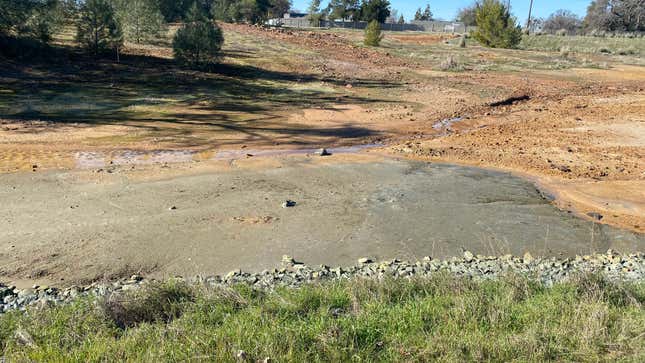
Regardless of the cleanup at Argonaut being within the early levels, and the positioning being, as Hillenbrand describes it, “extra simple” than most Superfund websites, the company has already spent $8 million over the past a number of years. He says they’ve no less than $14 million extra to go.
And Argonaut is only one of 1000’s of deserted mines littered throughout Gold Nation.
Pre-1975, there was no state or federal regulation mandating cleanup of mining operations, and, normally, the miners or corporations that operated these websites are lengthy gone. At present, there’s an alphabet soup of state and federal legal guidelines and businesses that govern deserted mines, however coordination is difficult, cash is tight, and the tasks themselves are sophisticated.
Although most deserted mines aren’t poisonous, these which are proceed to leach out dangerous contaminants like lead, mercury, and arsenic. Some are massive, advanced websites like Argonaut, requiring years of cleanup and hundreds of thousands of {dollars}. Many are smaller, left within the fingers of under-resourced municipal governments or non-public landowners which are typically unaware, unable, or unwilling to deal with the poisonous legacy of mining.
“For those who can’t see it, human nature is to reduce it,” says Hillenbrand. In Gold Nation, although, the place the historical past of mining is actually printed on the panorama, one would suppose it might be laborious to overlook. But due to cash, authorized wrangling, and native resistance, California has solely simply began to actually grapple with the poisonous legacy of the Gold Rush and the menace it poses to individuals right now.
Although gold is discovered all through California, it’s the western foothills of the Sierra, a big swath within the central-eastern half of the state snaking alongside the north-south hall of State Route 49 (named for the 49ers of the Gold Rush) that claims the title of Gold Nation. With its rolling, oak-covered hills, expansive open area, and postcard-worthy historic cities, the area has grow to be a well-liked vacation spot for vacationers and out of doors fans.
But, the area stays rooted in its frontier historical past, with numerous reminders of the Gold Rush that gave start to this quirky nook of the state. Cities have names like Emigrant Hole, Chinese language Camp, and Tough-and-Prepared, which seceded briefly in 1850 to keep away from mining taxes and continues to rejoice ‘Secession Days’ every summer season. There’s Sutter Creek, the ‘Jewel of the Mom Lode,’ and Placerville, nicknamed ‘dangle city’ for a slew of Gold Rush-era public executions that passed off there. In towns-turned-state-parks like Coloma and Columbia, one may give panning a strive. Up the street in Nevada Metropolis, one other nineteenth century boomtown, the group middle is predicated within the outdated ironworks foundry, and a water cannon for hydraulic mining is prominently displayed within the city middle.

Meandering alongside Freeway 49, aptly known as the Golden Chain Freeway, one might imagine that historic gold mining within the area was a rudimentary endeavor. Andrew Isenberg, a historian on the College of Kansas, describes the prevailing narrative of the interval as that of a “windfall journey.”
“Individuals, they wish to truly reenact this collective reminiscence that all of us have of mining as this environmentally benign factor that’s all form of enjoyable,” says Isenberg. However that’s a fable, he explains, pushing again towards the very notion of a gold ‘rush.’ “That’s the romantic story,” he says. “In reality, gold mining is concerning the rise of business in the USA.”
In actuality, the deposits that may very well be excavated by hand within the Sierra Nevada have been performed out in a yr. Of the tens of 1000’s of miners that descended on California in 1849, few ever discovered their fortune. Most went residence. Those who stayed, although, developed more and more invasive—and damaging—technique of getting on the gold.
They dammed and diverted waterways to pressure entire streambeds. They suctioned up backside grime from excessive alpine lakes and dug shafts deep into mountains of gravel above gold-bearing rivers. On the hydraulic mines, they washed away complete hillslopes with highly effective water cannons, capturing nuggets of gold uncovered inside and leaving a slurry of mud, gravel, and mercury (added to the method to assist bind with the gold) behind.
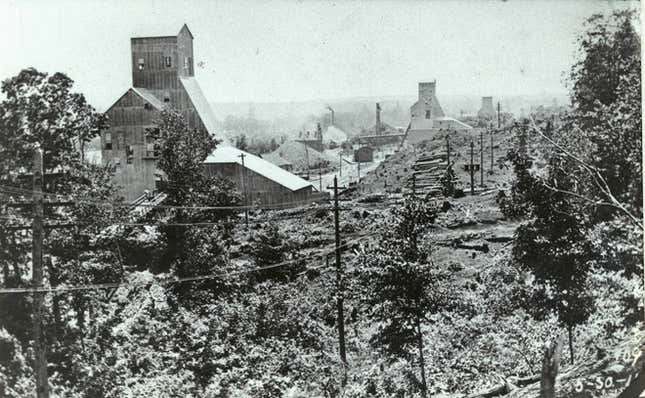
In some locations, like Argonaut, miners dug to get at deposits of gold trapped in quartz veins deep underground. Opposite to the notion of a short ‘rush’ within the 1850s, lode mining, as that technique known as, took off in California a lot later and continued nicely into the twentieth century.
In accordance with Isenberg, individuals on the time understood the complete influence of what they have been doing.
“The business is just not actually attempting to cover this. They’re not saying that what they’re doing isn’t dangerous for the surroundings,” explains Isenberg. “They’re simply saying, primarily, you bought to interrupt some eggs to make an omelet.”
It helped, in fact, that, for over a century, nobody could be held answerable for the injury.
With none protections in place to require cleanup of mined lands, the Gold Rush—and the many years of invasive mining that adopted—left a legacy of security hazards and poisonous contamination.
At present, the Division of Conservation estimates that there are roughly 47,000 deserted mines throughout California, positioned throughout private and non-private land in virtually each county within the state.
Consultants admit that the 47,000 estimate is simply that—an estimate. “For anyone to ever assert that there’s a decided quantity, a identified variety of deserted mine options… it’s absurd,” says Scott Ludwig, the top of the Forest Service deserted mine lands program. “I imply, each time we exit within the woods, whether or not it’s a path crew, timber crew, or no matter, they discover stuff.”
Hillenbrand on the EPA provides that the 47,000 quantity can be not useful. “I don’t like that quantity. It’s simply so intimidating,” he argues. In accordance with Hillenbrand, the quantity “narrows down very quickly” when one solely considers websites that threaten public well being. The Division of Conservation, for instance, estimates that simply 5,000 or so mines are contaminated.
“There’s lots of mines, however we have to concentrate on websites which are near individuals, that pose an actual environmental hurt,” says Hillenbrand.
However what precisely does it take for a vacant plot of land, or a pile of seemingly innocuous grime, to pose a menace?
For the 1000’s of non-contaminated websites, for instance, being clear isn’t the identical as being protected. Each year, a number of individuals in California are injured or die in deserted mines. Individuals fall into shafts lots of of toes deep. They encounter outdated explosives or asphyxiate on toxic gases like carbon monoxide. They get bitten by rattlesnakes, trapped in derelict buildings, or misplaced in miles-long tunnels.
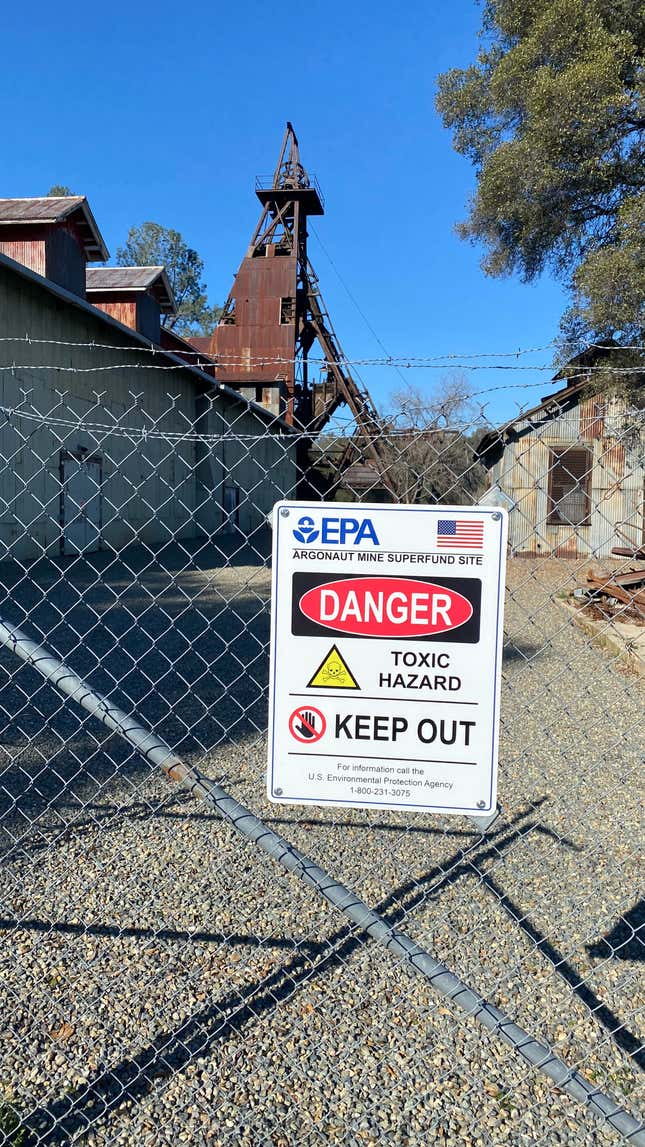
On the websites which are contaminated, in the meantime, contamination can imply lots of various things.
Water flowing by outdated tunnels or waste rock left behind can produce acid mine drainage that’s extremely poisonous and corrosive. The identical geological processes that produced veins of gold all through the Sierra Nevada additionally introduced metals like arsenic, lead, and cadmium. Most of those metals are naturally occurring within the space, however mining brings them to the floor the place they’ll infiltrate water, take in into vegetation, or be breathed in as mud.
Then there’s the mercury, added in huge portions (particularly on the hydraulic mines) to assist bind with and isolate gold from the rock round it. Scientists estimate that just about 13 million kilos of mercury have been misplaced to the surroundings within the nineteenth century and are actually trapped in streams, lakes, and reservoirs.
Although the method stays poorly understood, the low oxygen surroundings on the backside of reservoirs, particularly, appears to supply preferrred situations for microbes to transform mercury into methylmercury, a potent neurotoxin that may construct up in fish tissue because it strikes up the meals internet. In people, methylmercury may cause tremors, complications, insomnia, reminiscence and imaginative and prescient loss, ache, and seizures.
Although these contaminants are identified to be dangerous to human well being—with impacts starting from ache and vomiting to long-term issues like bronchial asthma and most cancers—linking contamination to particular well being outcomes is difficult. “Publicity is advanced,” says Mónica Ramírez-Andreotta, an environmental scientist on the College of Arizona. “You haven’t solely a number of metals, however you even have a number of publicity routes.”
Ramírez-Andreotta explains that well being requirements for contaminants are based mostly on a number of elements. Focus, or how a lot there’s, is barely a part of the puzzle. One should additionally take into account how somebody is uncovered, whether or not that’s by mud, meals, water, or grime, and the kind of contaminant, since human our bodies take in totally different components in several methods. The chance can be based mostly on how lengthy and the way ceaselessly one is uncovered, in addition to particular person traits like weight, age, and intercourse.
Partly as a result of it’s so advanced, there’s restricted analysis on the long-term well being results of residing close to a gold mine.

Sierra Streams Institute, a nonprofit based mostly in Nevada Metropolis, about two hours north of Jackson, is attempting to fill that hole. For nearly a decade, Sierra Streams has been working with scientists on the College of California San Francisco and the Breast Most cancers Analysis Undertaking, and extra just lately with Ramírez-Andreotta in Arizona, to assist residents perceive the dangers posed by poisonous mining waste.
The work initially targeted on breast most cancers. Although breast most cancers charges are usually larger in city areas, Nevada County, the place Nevada Metropolis is, has the third highest fee of breast most cancers within the state. Quantity two is neighboring Placer County, one other rural space and sizzling mattress of historic mining exercise. And, certainly, the Sierra Streams health project discovered that arsenic and cadmium ranges have been larger within the urine of girls residing in Nevada County than the nationwide common, which might enhance their threat of breast most cancers.
After the preliminary work, Sierra Streams branched out to take a look at how persons are uncovered to those dangerous contaminants. They recruited residents from across the area to assemble samples of water, soil, greens, and mud from their properties and faculties. Their results recommended that residents have been being uncovered to arsenic and lead by soil and domestically grown greens, at ranges above state and federal screening ranges in some instances. Ramírez-Andreotta recollects on a number of events having to name research contributors after outcomes got here in to encourage them to rapidly cowl any grime patches of their backyards.
With a small pattern measurement and no strategy to management for each threat issue, the researchers can’t straight hyperlink these contaminants with long-term well being points. But it surely does give them a place to begin to grasp how persons are being uncovered to mining waste and what to do about it.
Taylor Schobel, the agricultural well being coordinator for Sierra Streams, says she sees these community-led research as a strategy to begin a dialog concerning the legacy of mining and provides residents the information they should defend themselves. It’s about “easy adjustments anybody could make,” she explains, like moist dusting, utilizing raised beds for gardening, or simply taking one’s footwear off inside. “I wish to enable individuals to make their very own choices about day-to-day actions, to know small precautions they’ll take.”
However private actions like avoiding fish that is perhaps contaminated with mercury or retaining down arsenic-laden mud solely go up to now.
Engineers and geologists have devised varied strategies to forestall mine waste from escaping into the surroundings within the first place. The record of choices can sound like advanced physics—rhizofiltration, solidification, vapor extraction, thermal desorption—however the primary methods are easy: take contaminated materials to a landfill, deal with contaminated water, or, as they plan to do at Argonaut Mine, bury the waste on-site below clear soil and vegetation.
At Argonaut, the EPA has targeted on what they name tailings 4 space, the vacant plot of mud by the street that’s one among a number of contaminated ‘hotspots’ throughout the mine.
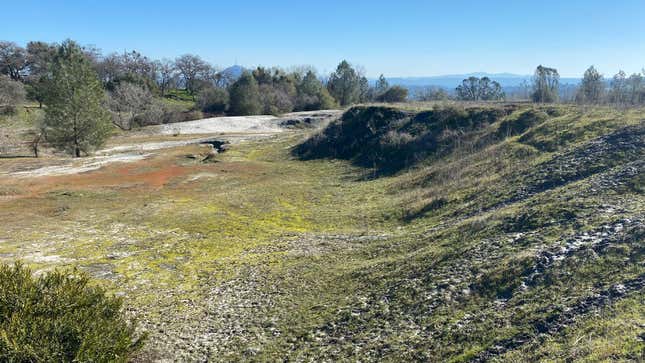
Deeper into the tailings space, exterior of the view of passersby however simply 100 toes from neighboring properties, there are eight concrete tanks left the place miners as soon as combined in mercury and cyanide with rock to bind with the gold. There’s the crumbling assay workplace the place homeowners would take a look at the standard of the deposit, dumping out cups of liquid lead into what’s now individuals’s backyards. Close by, there’s an earthen dam constructed up over many years from a slurry of waste rock and sand.
Hillenbrand is the Remedial Undertaking Supervisor for the Argonaut Superfund website. He’s fast to joke, although, that it’s “remedial as in remediation, not as in junior.” In reality, Hillenbrand has been concerned with this type of work for many years.
At first look, he seems to be the a part of a area geologist, in denims with muddy wellies, a light baseball cap, and a vivid yellow security vest. A geology class his sophomore yr in faculty modified the course of his profession, he says, and he nonetheless has a child-like enthusiasm for his job. “It’s completely geek geology stuff,” he laughs, unable to go quite a lot of minutes with out excitedly describing the “cutting-edge know-how” miners employed at Argonaut.
However that enthusiasm belies his seriousness of mission. Hillenbrand has the tough job of determining easy methods to clear up, or no less than comprise, the contamination at Argonaut and defend the close by group. The EPA estimates that over 500 individuals stay inside a mile of the positioning.
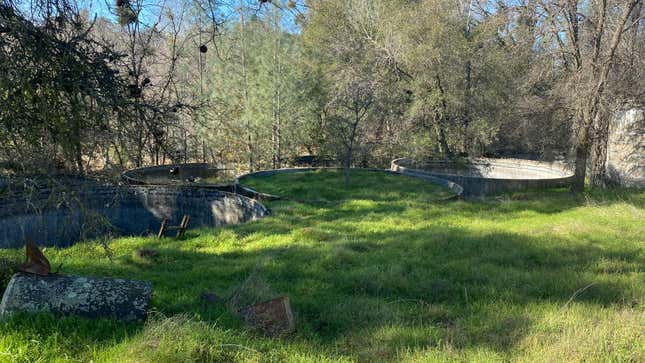
For the final a number of years, they’ve simply been endeavor “removing actions,” in EPA-lingo, to designate fast efforts to cope with pressing issues because the company develops the official cleanup plan for your entire website. “We don’t wish to wait 5 years till the entire website is known. It’s impacting individuals proper now,” says Hillenbrand.
Whereas the state shored up the failing dam that threatened the city, the EPA eliminated truck-fulls of grime contaminated with arsenic from a steep embankment subsequent to the junior highschool. Extra just lately, they started eradicating bushes, constructing new drainage ditches, and digging upl the contaminated grime in tailings space 4 to create a landfill, capped with clear soil and clay to carry all the things in place. “I did the outdated soccer area calculation,” Hillenbrand says of the anticipated measurement of the landfill. “It’ll be a few soccer area lengthy, together with the top zones, 47 toes deep.” His objective is to get the sphere “photo voltaic prepared,” so it’ll be clear and steady sufficient to construct a photo voltaic farm on it at some point, however it’ll stay off limits to most improvement.
Maybe surprisingly, not each resident has been thrilled concerning the plan.
Within the rapid aftermath of the Superfund itemizing at Argonaut, the EPA excavated the yards of 11 properties adjoining to the mine that had excessive ranges of arsenic of their grime. Most residents, Hillenbrand says, have been completely happy to have him.
However a twelfth residence down the street, which had grime within the yard that was so acidic Hillenbrand says it was corroding the muse of the home, has but to be cleaned up. The owners refused to let the EPA on their property. In an space of the state identified for prime ranges of, if not mistrust, then definitely disinterest in authorities, Hillenbrand admits it’s not an uncommon response. Plenty of this work, he says, is about constructing belief and convincing residents that the EPA isn’t there to tank their property values or destroy these mines that some locals take into account a part of their heritage. “A part of it’s simply displaying up. They see you on the market. They know you’ve good intentions,” he says. “For those who stick round lengthy sufficient, individuals get it.”
Often.
Whereas Hillenbrand says most residents have a tendency to alter their thoughts, if the EPA isn’t invited onto the property, there’s little they’ll do. The one choice in that state of affairs is to make use of what they name institutional controls to make sure that any potential future patrons of the property would learn that the positioning is contaminated. It’s a “authorities method of checks and balances,” explains Hillenbrand.
Carrie Monohan, this system director for Sierra Fund, a Nevada Metropolis-based nonprofit that works on mine cleanup, says most Gold Nation residents fall on a spectrum.
On the one facet are those that don’t notice these websites exist. “It’s form of out of sight, out of thoughts,” she says. Then there are “these which are very a lot conscious that there was a Gold Rush, and it’s a part of their id.” Monohan means that, on that finish of the spectrum, persons are conscious that these mines exist, however they don’t perceive the continued nature of the menace. “There’s only a sense of it’s the way it’s at all times been, so there’s not likely an issue,” she says. She describes this angle as “cultural blindness.”
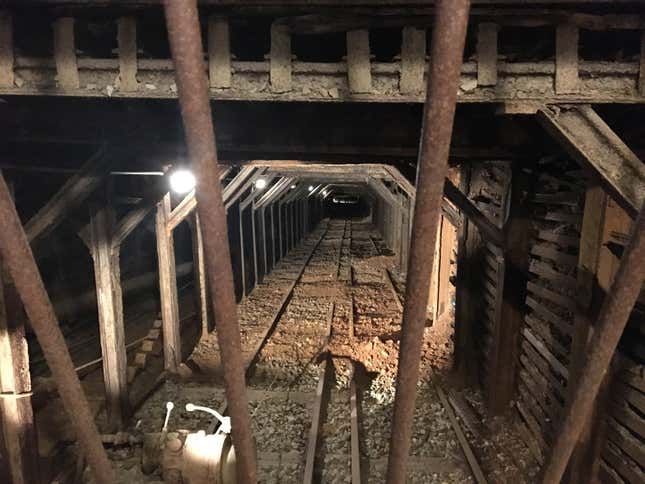
Schobel, who runs the group well being tasks at Sierra Streams Institute, says that recruiting contributors to the mission has been the largest problem, partially due to that blindness. For instance, she tried to recruit residents from the tiny city of Alleghany, solely an hour northeast of Nevada Metropolis however a lot deeper into the mountains. Alleghany was one of many few locations the place gold mining remained an financial driver after World Struggle II, and the native 16 to 1 Mine continues to function intermittently right now. When Schobel bought to Casey’s Place, the one bar on the town—the one enterprise actually—she recollects that the proprietor flat out instructed her, “Nobody is on this.”
Schobel means that a part of the problem is that the danger isn’t seen. Individuals can’t see arsenic, they usually can’t know for certain that mine contamination gave them most cancers. Consequently, Schobel says, she typically will get the response from multi-generational residents that everybody of their household is okay, so what’s the issue?
Mary Rosellen, who manages deserted mine lands in California for the US Forest Service, is aware of all too nicely the mistrust many residents maintain in the direction of authorities officers like herself. She grew up in Downieville, a small mining city close to the northern finish of State Route 49. Although it has grow to be a world-class mountain bike vacation spot, the forests round city are plagued by outdated mines.
Rosellen recollects hanging out at these mines as a baby and describes the attachment many Downieville residents really feel in the direction of these locations. “They stay on these mine websites. They grew up there. They have been born there,” she says. “There’s an empathy for these websites.” Due to that attachment, there’s a bitterness, she explains, when the federal government adjustments issues, even when it’s to maintain individuals protected.
Fortuitously, Rosellen thinks issues are getting higher and attitudes are bettering. “Once I began within the Forest Service, particularly within the 90s, I felt like we have been form of the dangerous guys,” she admits. That’s not the case, she says, partially as a result of the “outdated timers” who felt the deepest connection to those mines are passing on.
However, in an space that many individuals moved to precisely to flee exterior interference, some suspicion stays. Downieville is just not even 10 miles from Alleghany, the small city the place Sierra Streams struggled to recruit contributors to a well being research. “That is a part of their historical past that they love. It’s nonetheless a romanticized historical past,” says Schobel. “Additionally they simply wish to be left alone.”
Then there’s the fee.
A 2020 report by the Authorities Accountability Workplace discovered that federal businesses spent $2.9 billion on deserted mine cleanup from 2008 to 2017 throughout the western US. Of that, $2.5 billion was for environmental contamination, 90% of which was spent by the EPA alone.
EPA has so-called CERCLA-authority below the Complete Environmental Response, Compensation, and Legal responsibility Act that permits them to recoup some prices from anybody that’s “induced or contributed” to contamination. That may embrace fashionable mining corporations attempting to remine a website, landowners, and even well-intentioned state businesses and nonprofits attempting to assist with cleanup. However, even with the flexibility (and arduous duty) to sue these liable events, the EPA has recouped lower than half the prices of cleanup to-date, in line with the identical GAO report. Prices for a single mission can vary from as little as $100,000 to lots of of hundreds of thousands.
The EPA’s Superfund record, although, is just for the “worst of the worst” websites, as Hillenbrand describes them. 1000’s of different deserted mines are too small to warrant being listed however nonetheless pose an undue burden on the state. One tough estimate recommended that cleansing up all of the state’s so-called deserted mines might value $2.5 billion. The state Legislative Analyst’s Workplace cautions that that estimate is “the low finish of the vary.”

Nevada County’s most profitable mine in its heyday, and one among its hottest sights right now, is Empire Mine, now a state historic park. Empire has been shuttered since 1956, however contaminants nonetheless linger in hotspots across the property. In 2007, for instance, staff found regarding ranges of arsenic and lead in a extremely acidic tailings dump named the Pink Grime Pile. As a result of the bottom tunnels of Empire are flooded, in addition they discovered that arsenic-laden water was flowing out of the mine into a close-by creek each time it rained.
For the subsequent a number of years, and for hundreds of thousands of {dollars}, California State Parks fastened up the property, making a landfill for probably the most contaminated grime and designing a water therapy system. Although the company bore the brunt of upfront prices, in 2014 it settled with the worldwide mining big Newmont Mining Company, which operated the positioning after 1929. After litigation, Newmont paid virtually $15 million to retroactively cowl a few of the cleanup and agreed to soak up most future prices.
However discovering somebody to assist pay—a ‘doubtlessly accountable get together’ in EPA-speak—hasn’t been really easy at different mines within the space.
Like Jackson, the place Argonaut Mine is, Nevada Metropolis additionally has its personal Superfund website. In contrast to in Jackson, although, nobody addressed the issue till it was too late. On New 12 months’s Eve, 1996, a 30-foot log dam constructed to carry again mining particles on the Lava Cap Mine failed throughout a rainstorm. 10,000 cubic yards of waste flowed downstrefam, sufficient to cowl virtually 5 soccer fields in 1 foot of contaminated grime and dust. At that time, EPA stepped in, and, in 1999, the positioning joined the Superfund record.
Since then, the EPA has undertaken a number of removing actions at Lava Cap, together with digging up contaminated grime and offering water filters to households whose wells have been contaminated after the dam failure. In 2014, they accomplished building of a water system to attach residents to the municipal water provide, however they nonetheless have years and hundreds of thousands of {dollars} to go.
One of many challenges at Lava Cap is that contamination stretches far past the unique mine’s boundaries. “The definition of a Superfund website is the place contamination has come to lie,” says Brian Milton, who serves the identical function at Lava Cap that Hillenbrand serves at Argonaut. That features the waste that was carried downstream through the dam failure.
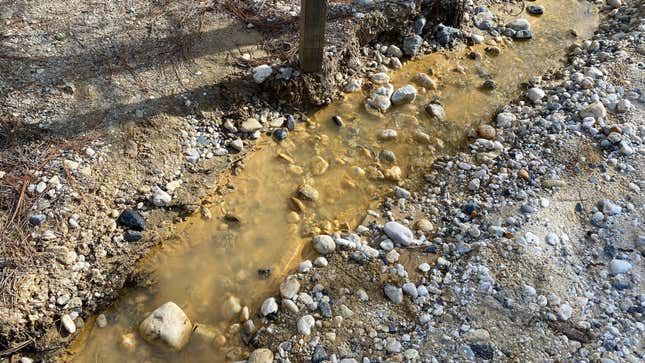
The seek for doubtlessly accountable events at Lava Cap has additionally been contentious and convoluted, which Milton says is “typical.”
In 2008, the Division of Justice sued a number of entities that had owned or operated Lava Cap Mine at varied factors in its historical past. Two subsidiaries of Newmont, which briefly owned the mine in a failed try and reopen it within the Nineteen Eighties, rapidly settled for $3 million.
However the 2008 lawsuit additionally mentions Sterling CentreCorp, a Canadian actual property firm that bought the land within the Nineteen Fifties (Milton says it’s tougher to recoup prices from overseas corporations) and Stephen Elder, a non-public developer who purchased the property in 1989. The EPA deemed Elder accountable partially as a result of he had did not adjust to a state cleanup order from the Nineteen Seventies that warned that the dam was already unstable. In 2018, a federal choose held Sterling and Elder chargeable for $32 million to assist cowl cleanup prices.
Elder knew there was a mine on the property when he bought it, however he claims he wasn’t conscious of how critical the issue was, nor was he instructed concerning the cleanup order or the state’s warning. He’s continued to battle the lawsuit, alleging that he’s being mistreated and doesn’t have the monetary means to pay or enchantment.
The state toxics company says the regulation is evident: non-public landowners will be held accountable, and it’s as much as them to correctly examine a website earlier than buying it.
However Monohan, this system director for Sierra Fund, says it’s not so black and white, particularly given the cultural blindness she describes.
“The dearth of curiosity has served as safety,” Monohan says, suggesting that some builders don’t undertake the required investigations to allow them to stay blissfully ignorant when creating a contaminated property. She provides that current actual property disclosure legal guidelines, which require property homeowners to element dangers to a possible purchaser (flooding being a typical instance) are inadequate in terms of accounting for deserted mines. Consequently, there are a number of examples of public businesses buying, or being given, property with contamination that wasn’t adequately disclosed or studied beforehand.
Cleanups are sometimes pushed by improvement, so if a landowner can’t afford to do the work, they’ll simply sit on the property till they’ll, even when the positioning is leaching out contaminants. “You’re caught with it until you will be artistic in how you determine to eliminate it,” Monohan admits.
For builders, eliminating it typically means giving contaminated parts of their property to native governments assuming they’ll repair the issue. However Monohan says that many cities and counties within the space are too small and under-resourced to deal with an deserted mine clear up, even when they solely intend to construct a public park or path.
There may be one benefit to placing deserted mines into the fingers of native governments. Municipalities can entry funding that people can’t, like EPA Brownfields Grants meant to assist communities rehabilitate and reuse contaminated land. With funding in hand, a small group like Nevada Metropolis can rent a nonprofit like Sierra Streams Institute or Sierra Fund to handle the cleanup work.
That’s precisely what’s occurred at Windfall Mine.
In outdated images, Windfall seems to be like large industrial operations. At present, although, there’s little left apart from a crumbling basis of an outdated constructing being overtaken by Himalayan blackberry. There’s a flat clearing, no bigger than a basketball court docket, on the fringe of thick woods, ending at a steep 50-foot cliff into Deer Creek under. The property is a part of the city’s massive community of open area that winds alongside the creek.
Kyle Leach, Sierra Streams’ geologist, has the identical informal method, muddy boots, and fascination with these websites as Hillenbrand on the EPA. Like Hillenbrand, he additionally has a tough job. For over a decade, Leach has been main a number of tasks throughout Nevada Metropolis funded by Brownfields Grants, backfilling outdated mine shafts and changing contaminated grime with clear soil and vegetation.
He’s juggling grants within the lots of of 1000’s of {dollars} vary, not the hundreds of thousands of {dollars} accessible to a federal company. Brownfields Grants additionally require a monetary match, so Leach says they’ve needed to get artistic pulling collectively funding from varied sources to cowl mission prices. For one, he’s realized to part tasks so he can tie up free ends and maintain the positioning steady till more cash comes by.
“With these cleanups, you’ve bought cash, till it’s gone,” Leach says. “That’s why we needed to do it in increments.”
The distinction in scale between what’s occurring at Windfall versus Argonaut is evident strolling across the property. Latest storm injury has introduced down bushes and branches, and invasive species like scotch broom are thriving throughout the property. The outdated mine shaft in the course of the clearing that they backfilled with grime a number of years earlier than is opening once more, they usually’ve needed to put up a fence to maintain individuals away. It’s too costly to make use of concrete or a number of toes of fresh soil to cowl waste like they’re doing at Argonaut. As an alternative, they’re utilizing just a little bit of fresh soil and lots of new vegetation.
Nonetheless, Leach thinks their cleanup is doing the trick, no less than for the foreseeable future. The slope on the fringe of the property is extra gradual than it was once, he says, they usually don’t get chunks of contaminated grime slumping into the creek anymore. A lot of the website can be revegetated, which helps maintain contamination in place.
The larger drawback, although, is that they’ll’t work past the property boundary. On one finish of the positioning, there’s a homeless camp on a naked, flat patch of grime. Leach explains that it’s flat as a result of it’s the place the outdated mine furnace was, and so it’s undoubtedly poisonous. However there’s a stark line between the naked floor and rocky, grassy materials subsequent to it, which Leach says marks the top of metropolis land. The opposite facet of the property stays in non-public fingers. Fashionable political boundaries weren’t precisely a precedence for the mining business.
“We’ll clear up proper to the property line,” explains Leach, “however there’s all this contamination on the opposite facet.”
As difficult as cleanup has been, it’s solely going to grow to be extra essential sooner or later. In California, local weather change is predicted to convey extra frequent and intense fires and floods to the steep slopes of the Sierra. At mines, that might convey poisonous waste trapped in outdated tunnels and grime piles to the floor.
And, in Gold Nation, mining isn’t a factor of the previous. Even with right now’s know-how and environmental protections, gold mining is a dangerous enterprise; but there have been a number of makes an attempt to reopen outdated mines throughout the area.
Within the Nineties, a mining firm reopened the North Columbia Diggins, north of Nevada Metropolis. As they dug new tunnels, the miners bumped into an enormous fracture within the rock, which flooded the mine and drained out the encompassing aquifer like a tub. A minimum of one million gallons of water flowed out on daily basis for months, and 12 non-public wells within the space went dry, together with the water provide for a close-by elementary college. The corporate changed the wells—going out of enterprise within the course of—however water high quality points continued for years.
Extra just lately, the city of Grass Valley has contended with a push by Rise Gold, a Canadian firm, to reopen Idaho-Maryland Mine, positioned only a mile from the city’s predominant strip. It’s the third time for the reason that Nineties that somebody has tried, however gold costs are larger now than they have been through the earlier makes an attempt. This month, the Nevada County Planning Fee rejected the Rise Gold mission, however the county Board of Supervisors has the ultimate say. They’re anticipated to make a closing determination later this summer season.
Ralph Silberstein, a Grass Valley native who has been a outstanding voice within the marketing campaign towards the reopening, says he and different residents are involved about a number of points, together with site visitors, air air pollution, actual property values, and, after the expertise at North Columbia, consuming water. However one of many marketing campaign’s predominant issues is that Idaho-Maryland was by no means cleaned up after the primary wave of mining. Silberstein says there are nonetheless massive piles of waste across the property that may very well be launched into the surroundings if the mine reopens.
“We actually don’t need there to be one other legacy we create of poisonous contamination that goes on for one more 1,000 years,” laments Silberstein.
Gold mining isn’t the business it as soon as was in California, however mining tourism and reminiscence remains to be large enterprise in Gold Nation. And it’s private in a spot the place many of the cities have been constructed round mining and lots of the locals are descendants of miners. Individuals have developed an attachment to those locations and sometimes proceed to depend on and benefit from the very websites which are contaminating their properties and poisoning their our bodies, whether or not they notice the menace or not.
However the many years of extraction, the poisonous legacy of gold mining, and the threats of the longer term are as a lot part of the story of the Gold Rush as the story of the unique 49ers. 175 years is a very long time for issues to build up. California can’t afford to take that lengthy to repair it.
Leah Campbell is a proud Californian and freelance journalist who covers the surroundings, disasters, and science coverage.
Trending Merchandise

Cooler Master MasterBox Q300L Micro-ATX Tower with Magnetic Design Dust Filter, Transparent Acrylic Side Panel…

ASUS TUF Gaming GT301 ZAKU II Edition ATX mid-Tower Compact case with Tempered Glass Side Panel, Honeycomb Front Panel…

ASUS TUF Gaming GT501 Mid-Tower Computer Case for up to EATX Motherboards with USB 3.0 Front Panel Cases GT501/GRY/WITH…

be quiet! Pure Base 500DX Black, Mid Tower ATX case, ARGB, 3 pre-installed Pure Wings 2, BGW37, tempered glass window

ASUS ROG Strix Helios GX601 White Edition RGB Mid-Tower Computer Case for ATX/EATX Motherboards with tempered glass…










